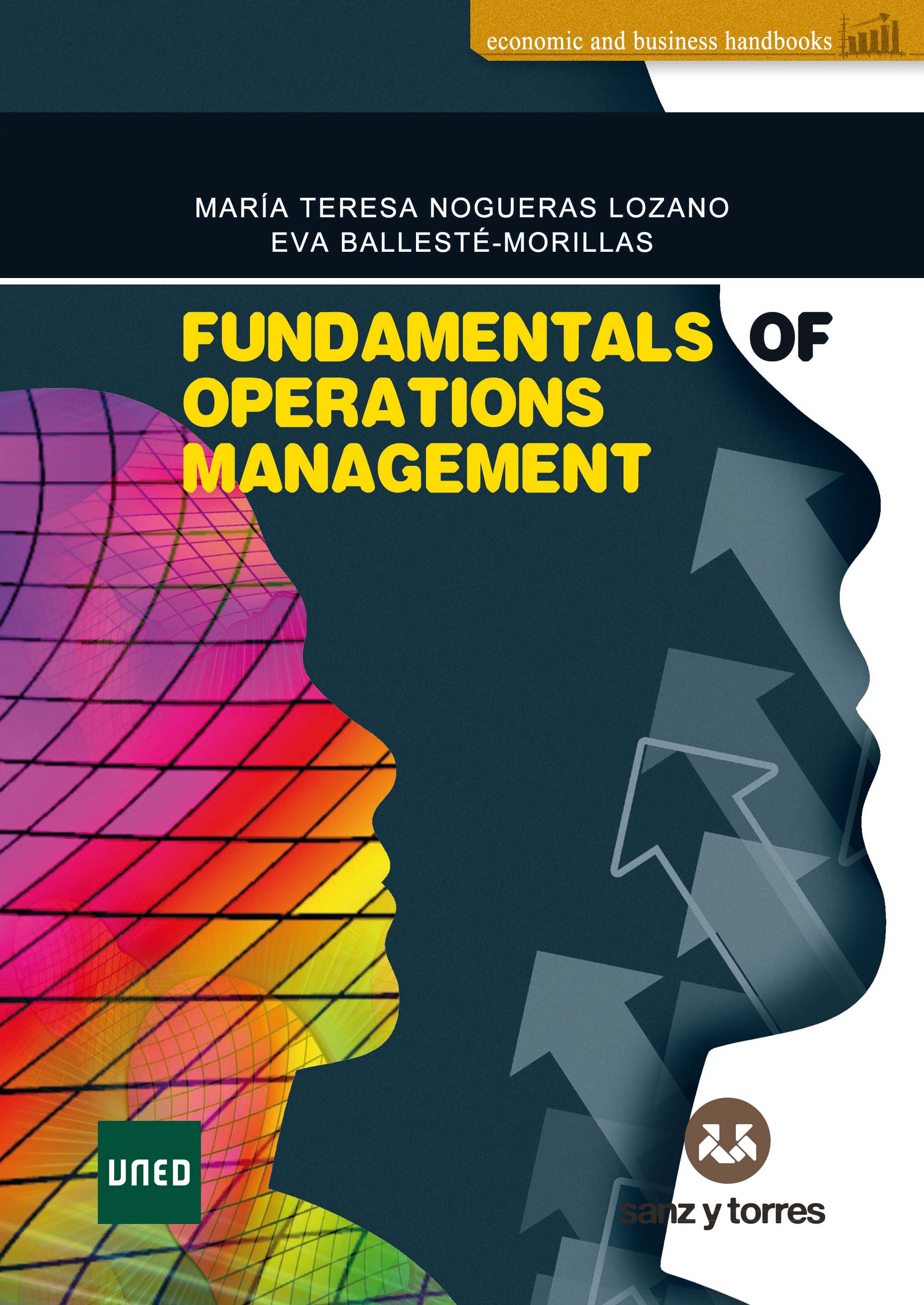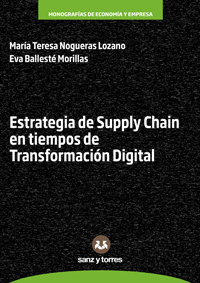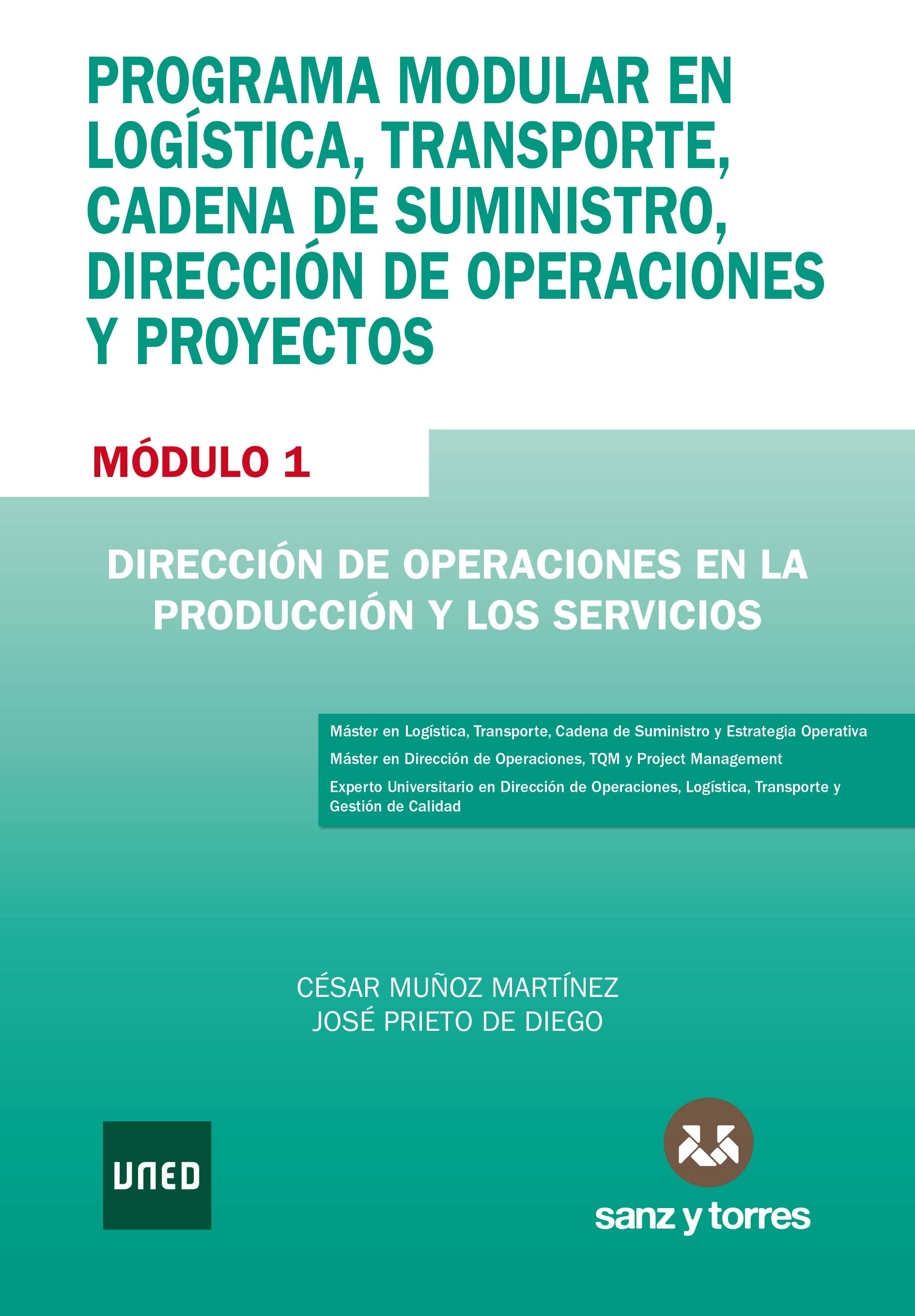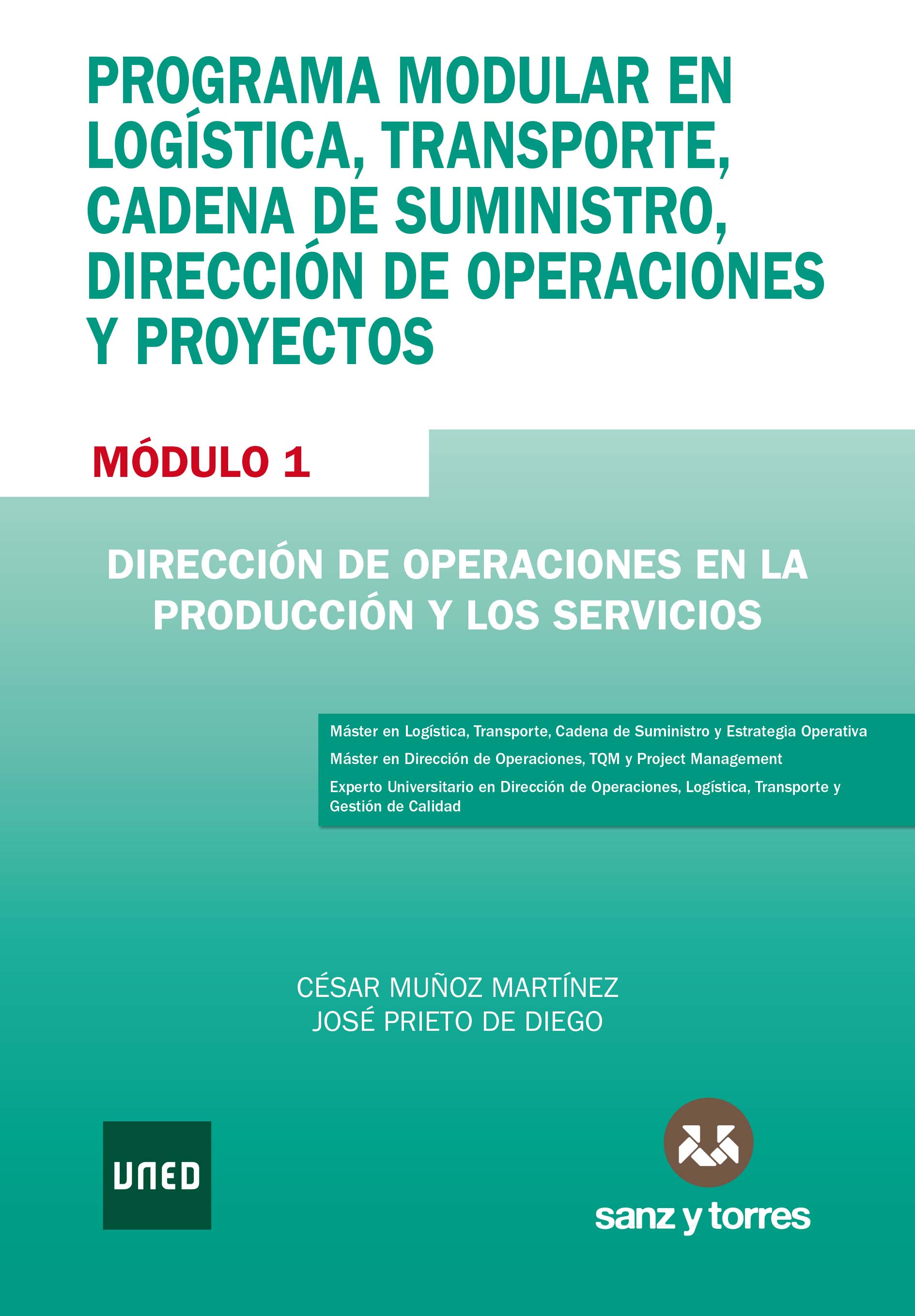Fundamentals of operations management
por María Teresa Nogueras Lozano, Eva Ballesté-Morillas,
Traducción: Eric Levit Mora,
- Edición: 1ª 2024
- Idiomas: Inglés
- Plaza de edición: Madrid , España
Materias:
-
Papel:
- ISBN: 978-84-19947-67-3
- Páginas: 282
- Dimensiones: 170 cm x 240 cm
- Encuadernación: Rústica
Disponible
pvp.24,96 €
-
Formato electrónico:
- ISBN: 978-84-19947-68-0
- Formato: pdf
- Tamaño: 6.846 KB
-
Permisos:
Copiar / Pegar no permitido,
Imprimir no permitido,
Imprimir solo una vez no permitido
Disponible
pvp.18,72 €
Información detallada:
Resumen del libro
We want to welcome you to both an exciting and tactical discipline: operations management.
This manual on Fundamentals of operations management is an effective tool to understand one of the main functions of any organisation: the creation of goods and services. That is, to understand what resources are needed to generate the goods and services of an organisation in a global and highly competitive environment, while also incorporating new technologies.
In this manual, along with the classic fundamentals of operations management, we will look forward towards what is coming and how it will impact process improvement in companies.
The main goal of this book is to equip the reader with the fundamental concepts in operations management. To do this, it will present the main qualitative and quantitative models for managing operations both in public and private companies.
As the reader will see, the chapters are structured with an easy-to-follow and rigorous thematic thread that will make each and every step understandable. All this book has been designed with a distance learning student or a self-taught reader, such as an entrepreneur, in mind.
We aim to facilitate the learning of a discipline that for years has been considered complicated and specifically focused on certain professions, and to highlight its relevance and future opportunities. We strive for the reader to enjoy learning from this manual and to discover an exciting discipline with many career opportunities.
The book combines both theory and practical exercises with real life cases whose examples will allow the learner to understand the day-to-day and the myriad of challenges and opportunities faced by operations management.
The manual covers classic management topics such as process design, inventories, demand forecasting, etc., as well as newer concepts such as digitisation of the supply chain.
As for the way the content is conveyed, we have opted for a simple language that facilitates understanding, while also being rigorous and precise.
The methodology used is distance learning, which means that this manual is mainly intended for self-learning, and consequently, its structure is designed to promote the understanding of its contents.
To achieve this goal:
- The text is divided into eight chapters that present a logical and coherent sequence to understanding what operations management consists of:
Chapter I “Operations in the Current Environment” defines what operations are in a company, teaching the reader about the evolution of this discipline in a global environment. The chapter shows the importance of the company’s competitiveness generators, and explains key concepts such as the value chain, the extended network, and digitisation, which are crucial in current production processes and serve as an introduction to other concepts that will be explained in further detail in the following chapters, which are aimed to teaching how to achieve a right tactical decision-making in operations management.
Chapter II “Managing Operations” addresses the main topics in the day-to-day of operations management in order to get the reader in the context of the type of decisions that must be made in matters related to the supply chain, inventory management costs, planning the necessary materials, project management, among others, and understand the implications of such decisions in the proper functioning of the company.
After having defined what operations are (Chapter I) and the types of decisions that need to be made for a successful operation (Chapter II), Chapter III, “Tools to Support Decision Making in Operations”, aims to provide the necessary tools to support decision-making in two main categories: quantitative and qualitative techniques. Quantitative techniques include decision trees, linear programming, transportation modelling, queuing models, learning curves, simulations, and sales forecasting. On the other hand, qualitative techniques include concepts such as judgment based on experience, customer surveys, and the Delphi method. By understanding these techniques, readers will be able to delve into key concepts in the following chapters in order to properly plan resources to respond to anticipated demand while avoiding cost overruns and waste and aligning with the company’s production capacity.
Chapter IV, “Aggregate Planning,” addresses medium-term production planning, which typically spans between 6 and 18 months. Its main objective is to meet demand, which requires determining the production quantity, inventory levels, and the amount of work or labour force needed by the company, whether in-house or outsourced. To achieve this, it is necessary to develop an Aggregate Production Plan, which is essential for an efficient production.
As determining the inventory level is one of the key factors in Aggregate Planning, this manual devotes two chapters to inventory management: Chapter V, “Inventory Management: Independent Demand” and Chapter VI, “Inventory Management: Dependant Demand”. In both chapters, inventory management and being able to determine the optimal quantity of supplies that should be ordered are critical factors for the company’s costs and productivity. Therefore, calculating the optimal order quantity is the central focus of both chapters.
The decision to divide inventory management into two chapters is mainly due to the methods used to determine the optimal order quantities, which differ for materials with dependent and independent demand. For the latter case, classic or traditional methods (Chapter V) are not valid (initial assumptions change), and more complex systems, such as MRP (Material Requirements Planning), studied in Chapter VI of this manual, are required. In addition, inventory management has become a critical factor for a company’s competitiveness in today’s globalized world. The emergence of philosophies or approaches that practically eliminate inventory, such as the Just-In-Time (JIT) or Lean Manufacturing systems, cannot be overlooked, so they have their space in Chapter VI.
Chapter VII, “Operational Scheduling,” constitutes the final link in operations management. Operational scheduling or short-term planning translates medium to long-term plans into short-term decisions aimed at allocating human resources, machines, and materials in the workplace to plan the most optimal work sequence possible. In short, it translates the Master Production Schedule (Chapter IV) and MRP (Chapter VI) into work sequences and specific assignments of people, materials, and machines to the work centres. Usually, assignments are made on a weekly, daily, and even hourly basis.
The last chapter (Chapter VIII), “Quality in the Age of Planned Obsolescence”, tackles the concept of quality from the perspective of operations management and how it has evolved towards process improvement theories while addressing the phenomenon of planned obsolescence, waste generation, and the ethical commitment of operations management to preserve the environment.
- Each chapter is structured as follows:
- The title that identifies it.
- A descriptive content section of its main sections.
- The educational goals to be achieved after studying it,
- An outline that orderly structures the content.
- A summary that presents the most important contents and ideas of the chapter
The text itself is complemented by graphics, examples, diagrams, and practical situations that occur in our business reality and highlight the application of theoretical concepts.
- Glossary of terms
- A series of self-assessment questionnaires for every chapter that aims to evaluate the reader’s degree of understanding of its contents (in the online portion of the manual).
- Recommended readings (in the online portion of the manual) to reinforce the contents learned through articles, manuals or a combination of both that will allow the reader to establish their learning of all the key issues. Some chapters are also reinforced with videos found on the Internet that contain practical application cases of the studied contents.
As can be seen, this book concludes with an extensive bibliography made up of manuals related to Operations Management.
Finally, it is our wish that the reader enjoys the manual and that it opens the doors to new and interesting opportunities for them.
Dr. Mª Teresa Nogueras Lozano
Dr. Eva Ballesté-Morillas
Otros libros de María Teresa Nogueras Lozano
-
por María Teresa Nogueras Lozano y Eva Ballesté-Morillas
Estrategia de Supply Chain en tiempos de Transformación Digital
Sanz y Torres, S.L. 2020
-
Papel:
pvp.10,00 €
-
-
por María Teresa Nogueras Lozano y Eva Ballesté-Morillas
Fundamentos de la Dirección de Operaciones
Sanz y Torres, S.L. 2018
-
Papel:
pvp.36,00 €
-
-
por María Teresa Nogueras Lozano
Decisiones de Planificación y Dirección en la Empresa Turística
Sanz y Torres, S.L.
-
Papel:
pvp.48,00 €
-
Otros libros de Eva Ballesté-Morillas
-
por María Teresa Nogueras Lozano y Eva Ballesté-Morillas
Estrategia de Supply Chain en tiempos de Transformación Digital
Sanz y Torres, S.L. 2020
-
Papel:
pvp.10,00 €
-
-
Una herramienta eficaz para estimular la prosperidad de un pais
la financiación de sectores estratégicos mediante la colaboración público-privadaSanz y Torres, S.L. 2020
-
Papel:
pvp.10,00 €
-
-
por María Teresa Nogueras Lozano y Eva Ballesté-Morillas
Fundamentos de la Dirección de Operaciones
Sanz y Torres, S.L. 2018
-
Papel:
pvp.36,00 €
-
Otros libros de Dirección, Gestión y Organización de Empresas
-
por César Muñoz Martínez y José Prieto de Diego
Máster en logística, transporte, cadena de suministro y estrategia operativa.
(Módulos 1, 2, 3, 4, 5, 6, 7, 8, 9, 10, TFM)Sanz y Torres, S.L. 2024
DISPONIBILIDAD ESTIMADA: PRIMER CUATRIMESTRE (CURSO 2024-2025)
-
Papel:
pvp.420,00 €
-
-
por César Muñoz Martínez y José Prieto de Diego
Máster en dirección de operaciones, TQM y project management
(Módulos 1, 2, 3, 4, 5, 11, 12, 13, 14, 15, TFM)Sanz y Torres, S.L. 2024
DISPONIBILIDAD ESTIMADA: PRIMER CUATRIMESTRE (CURSO 2024-2025)
-
Papel:
pvp.420,00 €
-
-
por César Muñoz Martínez y José Prieto de Diego
Experto universitario en dirección de operaciones, logística, transporte y gestión de calidad
(Módulos 1, 2, 3, 4, 5)Sanz y Torres, S.L. 2024
DISPONIBILIDAD ESTIMADA: PRIMER CUATRIMESTRE (CURSO 2024-2025)
-
Papel:
pvp.300,00 €
-
-
por César Muñoz Martínez y José Prieto de Diego
Experto profesional en logística, transporte y cadena de suministro
(Módulos 2, 4, 6, 7)Sanz y Torres, S.L. 2024
DISPONIBILIDAD ESTIMADA: PRIMER CUATRIMESTRE (CURSO 2024-2025)
-
Papel:
pvp.270,00 €
-









